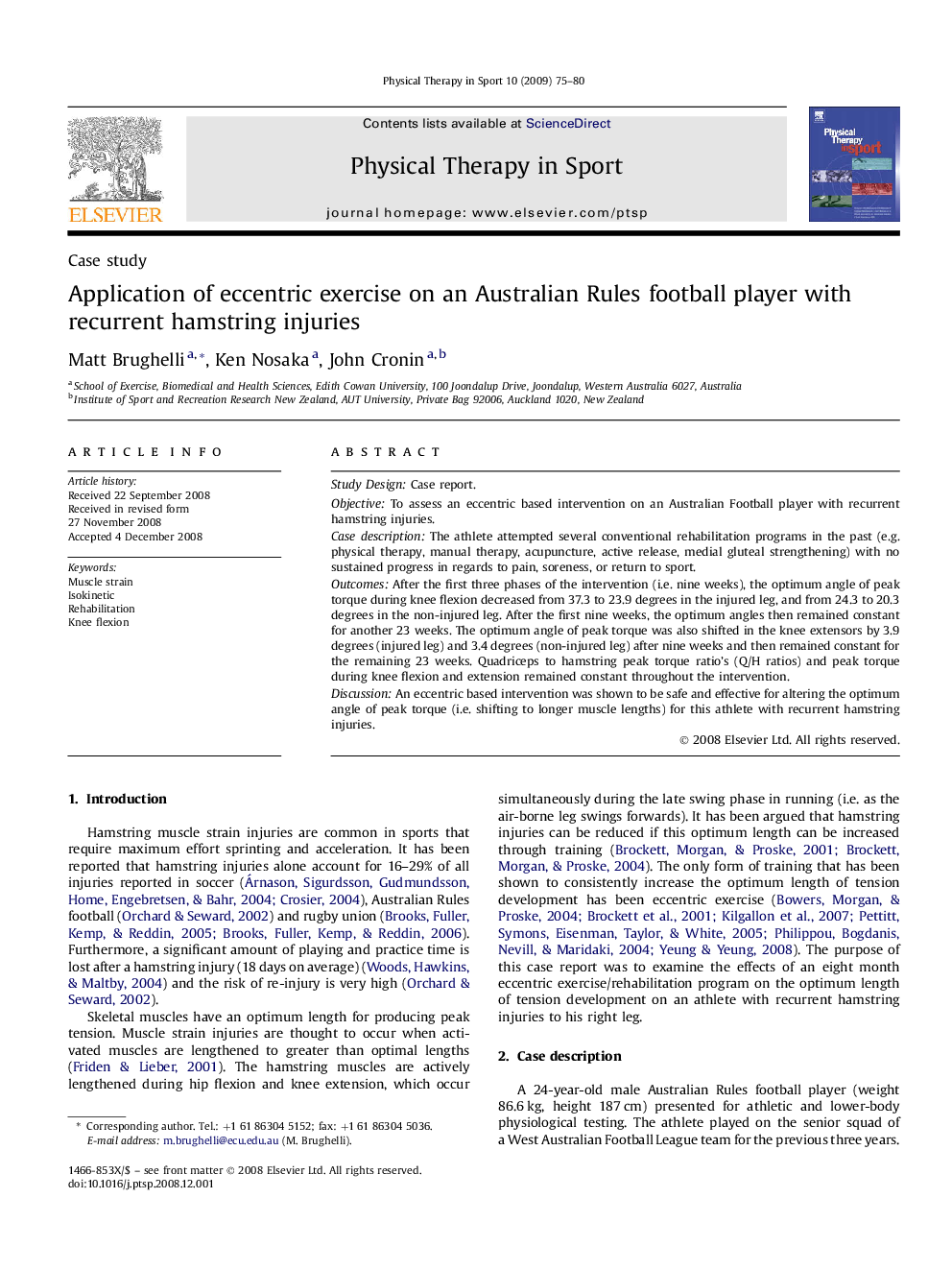| Article ID | Journal | Published Year | Pages | File Type |
|---|---|---|---|---|
| 2714125 | Physical Therapy in Sport | 2009 | 6 Pages |
Study DesignCase report.ObjectiveTo assess an eccentric based intervention on an Australian Football player with recurrent hamstring injuries.Case descriptionThe athlete attempted several conventional rehabilitation programs in the past (e.g. physical therapy, manual therapy, acupuncture, active release, medial gluteal strengthening) with no sustained progress in regards to pain, soreness, or return to sport.OutcomesAfter the first three phases of the intervention (i.e. nine weeks), the optimum angle of peak torque during knee flexion decreased from 37.3 to 23.9 degrees in the injured leg, and from 24.3 to 20.3 degrees in the non-injured leg. After the first nine weeks, the optimum angles then remained constant for another 23 weeks. The optimum angle of peak torque was also shifted in the knee extensors by 3.9 degrees (injured leg) and 3.4 degrees (non-injured leg) after nine weeks and then remained constant for the remaining 23 weeks. Quadriceps to hamstring peak torque ratio's (Q/H ratios) and peak torque during knee flexion and extension remained constant throughout the intervention.DiscussionAn eccentric based intervention was shown to be safe and effective for altering the optimum angle of peak torque (i.e. shifting to longer muscle lengths) for this athlete with recurrent hamstring injuries.
